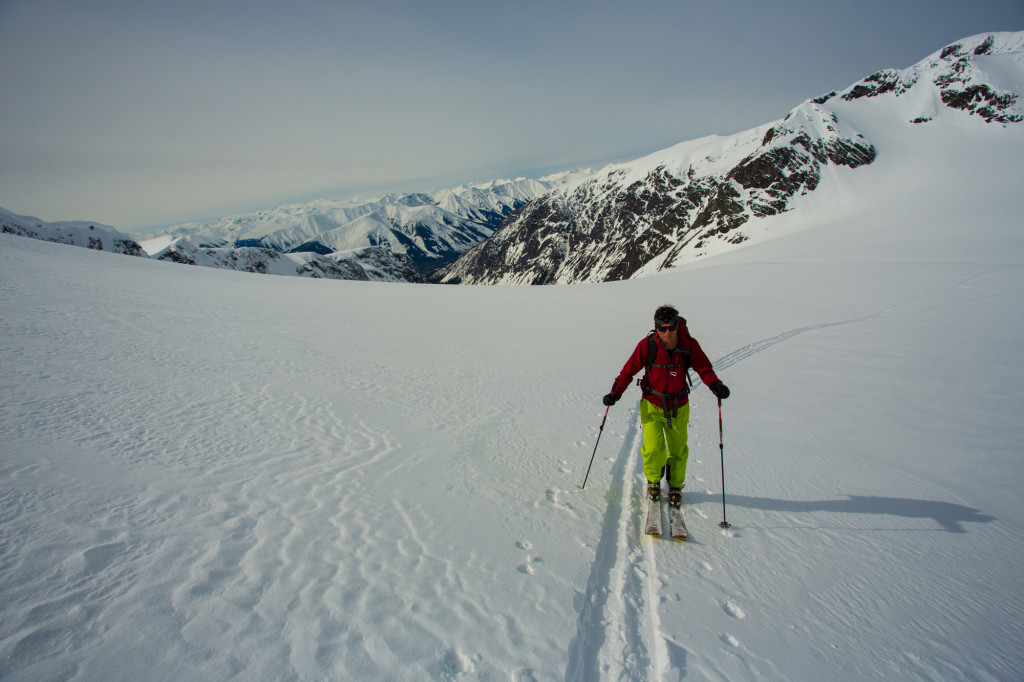Wax – Yes It’s Important
No, not your legs. In this case I’m talking about waxing your skis or boards. For whatever reason, waxing is something that people often neglect. Much like your boots (which if neglected will turn your ski boots into torture chambers), the base of your skis or boards is something that needs to be loved and cared for. It’s the place where snow meets human, where that magic relationship between ski and pow becomes something wonderful and beautiful and makes life worth living.

Photo – Dave Silver
Don’t wax much? Don’t worry. I’m here to help. But don’t think the suggestion is to become obsessive about it. No one is asking you to become a ski tech that could tune and wax Lindsey Vonn’s skis at a World Cup. Not even close. Waxing is something easy, relaxing and enjoyable and it doesn’t have to be done every time you ski or ride. Your skis need love, but what they really need is moisture.

Photo – Skevik Skis
Have you ever noticed when your black, sintered bases start looking a little ashen faced and grey and every time you are out shredding you’re the last to hit the lift line? This is what happens to a neglected ski base. Over time, without wax, the base of a ski or board will start to dry out and whiten, almost like the black is fading. As it continues to dry, it shrinks. In extreme cases, the base can shrink away from your edges, making them prone to blowing out of the ski on a rock or hard ice.

Photo – Caton Garvie
Ski bases need wax to stay moist and healthy. This is true from the moment you buy them. In fact, one of the best things you can do to a brand new ski is wax them, multiple times, so the wax really soaks into the pores of the base and sets you up for success in the life of the ski. During the season, it’s prudent to wax them a few times a month, especially if you’re out there skiing alot.

Photo – Ashley Barker
So how do you wax your skis? First, let’s discuss the wax itself, which really means discussing snow. There are basically six different types of snow, ranging from the six sided crystals of new snow to spring corn, which have gone through multiple melt freeze cycles and are older, with round gains made of ice. Within the six types of snow there can be varying water content (high or low – think fluffy or wet pow) as well as differences in temperature. Lots of variations, in other words. But the simple thing is this: the older the snow, the stickier it tends to be. In new snow, on a fluffy powder day, there is less friction and more air between you and the ski, which is why if you’re skiing untracked pow all day every day, you may not notice not waxing too much. In older snow, because the crystals have lost their points and ’rounded’ out there is more friction with the base of the ski, so it runs slower and feels stickier. All of these things are also affected by how cold or warm it is outside. In spring time, for instance, the grains are warmed and round quickly (think new snow in the morning and wet pug in the afternoon) and because of that are sticker on your skis. With me so far?

Photo – Grant Gunderson
Wax creates a lubricant on the base of your ski so it can glide smoothly on the surface of the snow. The warmer or older the snow, the softer the wax is needed. There are lots of different types of waxes, all with a specific purpose and geared for specific snow temperatures and conditions. But the easiest way is to choose your wax is to use the handy little graphics ski wax companies like Swix and Toko put on their packaging. They have waxes for all occasions and all types of skis and boards. Warm weather, use this wax, cold weather, try this etc… But if that’s too much work, you can always buy an all-around wax, which is typically white. Most of the companies make it and it’s cheap and while it’s not the best stuff out there, it will keep your bases moist and your skis will glide on just about all but the coldest and warmest snow surfaces.

Photo – Dave Silver
On to waxing. This winter, get yourself an iron, some wax and play around a little. I won’t give you step by step instructions; there are lots of youtube videos on the best techniques to wax skis, so watch a few and see where you go. But remember one thing: the most important part of waxing is getting the ski nice and warm so the wax stays wet and really soak into the pores of the base. This is critical. The object of waxing isn’t to have wax over the base of your ski, but in the pores of the base of your ski. This is why, when the wax dries and hardens, you scrape and then brush all the dried wax off your ski. All you want is waxed soaked into your ski. So the longer your skis stay warm and wet the better. Little life advice there.

Photo – Grant Gunderson
Waxing is important. It helps prolong the life of your ski, and provides a better sliding surface on which to have fun. There’s nothing worse, especially on a warm spring day when the corn snow is just right, to have skis that don’t slide. And having fun is why we do this. So this year, wax your skis a couple of times and see how it feels.
Be safe, wax hard.


